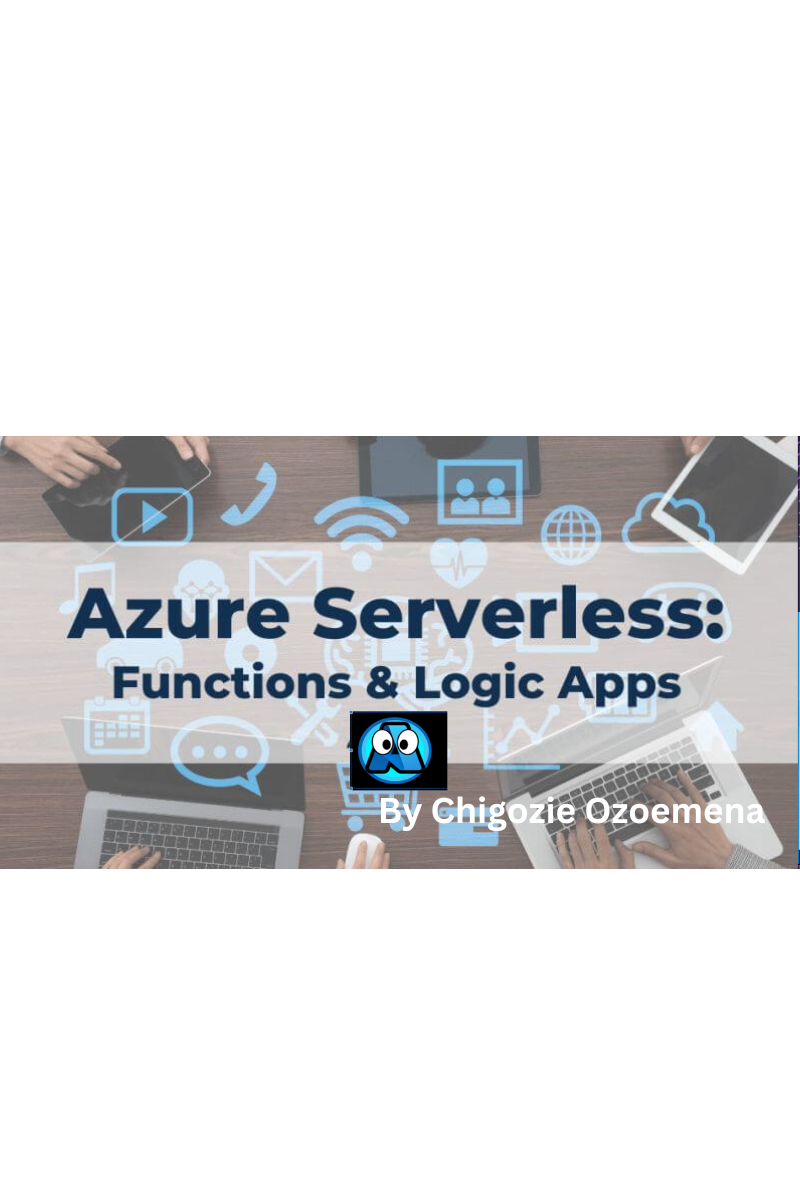Streamline Serverless Workflows Using Azure Logic Apps
 Chigozie Ozoemena
Chigozie Ozoemena
Introduction
Azure Logic Apps is a powerful serverless integration platform that helps automate workflows across cloud services, on-premises systems, and custom APIs. This guide demonstrates how to create and deploy a workflow using Azure Logic Apps to automate a process (e.g., sending an email notification when a file is uploaded to a storage account).
Step 1: Log in to Azure Portal
Visit portal.azure.com.
Sign in with your Azure credentials.
Step 2: Create a Logic App
In the search bar at the top of the Azure Portal, type “Logic Apps” and select Logic Apps from the search results.

Select a hosting option to begin creating a new Logic App. Choose between the Consumption Plan and Standard Plans.

Step 3: Configure the Logic App
Basics Settings:
Subscription: Select your Azure subscription.
Resource Group: Choose an existing resource group or create a new one by clicking Create new.
Logic App Name: Enter a globally unique name for your Logic App.
Region: Select the Azure region where the Logic App will be hosted. Choose a location closest to your users.
Enable Log Analytics: select yes or No

Review and Create:
Click Review + Create.
Review all the information entered.
Click Create to deploy the Logic App.
Step 4: Define a Workflow
Go to the Logic App Designer:
After deployment, click Go to Resource to open your Logic App.
In the left pane, select Development Tools
Select Logic App Designer.
Click add a trigger

Choose a Workflow Trigger:
Choose a Trigger for your workflow. Triggers tell your app when to start running. Each workflow needs at least one trigger. It can be event-based or schedule-based.
Examples of Triggers:
HTTP Request (e.g., when an HTTP request is received).
Recurrence (e.g., run every 1 hour).
Azure Service (e.g., when a new blob is added to Azure Storage).
OneDrive (e.g, when a file is created)
Gmail (e.g, when a new email arrives)
we will be using OneDrive (When a file is created) trigger here.
IMAGE
Create a connection by signing in
Click accept to allow logic app access to your information

On the parameter tab:
add the particular folder you want to track, choose root if there is none in particular.
choose how often the folder will be checked.
click save

Add Actions to the Workflow:
After defining the trigger, click New Step to add Actions.

Actions are tasks that run when the trigger condition is met. You can integrate various services (e.g., send an email, create a record in a database, call an API, etc.).
- Examples of Actions:
- Send an email using Office 365.
- Insert data into SQL Server.
- Send email Gmail
In this article, we will use send email (Gmail)

Provides a connection name and authentication type and sign in to create a connection.

Select the email to be used, sign in, allow access and continue.

Add your recipient email address on the action parameter tab, compose the automatic email, and save.

Step 5: Test the Logic App
After configuring the trigger and actions, click Save in the top toolbar to save your Logic App. The Logic App will check for the stated trigger following the time interval configured and execute the action once the parameter is met. Now let us test the logic app.
Upload a new file in OneDrive.

After the configured time interval, check the recipient email.
To test the Logic App manually, click on Run Trigger in the Logic App overview.
You can also monitor the workflow execution in real-time by going to the Run History tab on the Development Tools, which shows the status of each run (successful or failed).
Step 6: Clean up
When you are done testing your logic app, delete the resource group to avoid incurring charges. This will clean up the resource group and all resources in it.
Subscribe to my newsletter
Read articles from Chigozie Ozoemena directly inside your inbox. Subscribe to the newsletter, and don't miss out.
Written by

Chigozie Ozoemena
Chigozie Ozoemena
Hi there! 👋 I'm Daniel Ozoemena, a passionate Cloud Solution Architect and DevOps Engineer dedicated to building scalable, secure, and innovative cloud solutions. With hands-on experience in Azure, AWS, and Google Cloud Platform, I specialize in deploying infrastructure as code, automating workflows, and optimizing system reliability. Driven by a love for problem-solving, I constantly explore new technologies and best practices to deliver impactful results. Beyond the cloud, I enjoy mentoring, blogging about tech insights, and contributing to open-source projects. When I'm not automating deployments or creating secure virtual networks, you can find me playing chess, learning about AI, or brainstorming solutions to real-world challenges. Let’s connect and grow together on this tech journey! 🚀
